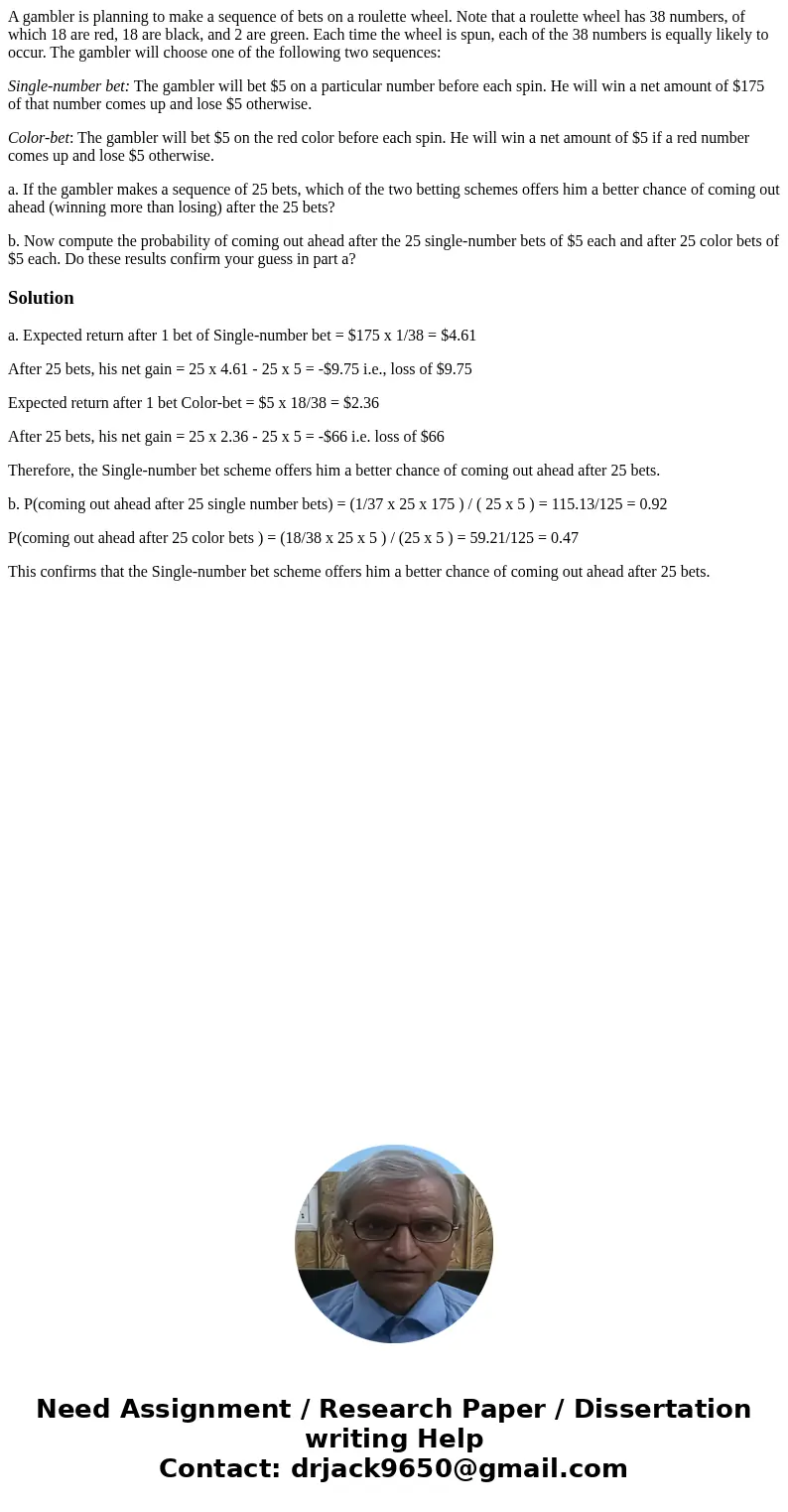A gambler is planning to make a sequence of bets on a roulet
A gambler is planning to make a sequence of bets on a roulette wheel. Note that a roulette wheel has 38 numbers, of which 18 are red, 18 are black, and 2 are green. Each time the wheel is spun, each of the 38 numbers is equally likely to occur. The gambler will choose one of the following two sequences:
Single-number bet: The gambler will bet $5 on a particular number before each spin. He will win a net amount of $175 of that number comes up and lose $5 otherwise.
Color-bet: The gambler will bet $5 on the red color before each spin. He will win a net amount of $5 if a red number comes up and lose $5 otherwise.
a. If the gambler makes a sequence of 25 bets, which of the two betting schemes offers him a better chance of coming out ahead (winning more than losing) after the 25 bets?
b. Now compute the probability of coming out ahead after the 25 single-number bets of $5 each and after 25 color bets of $5 each. Do these results confirm your guess in part a?
Solution
a. Expected return after 1 bet of Single-number bet = $175 x 1/38 = $4.61
After 25 bets, his net gain = 25 x 4.61 - 25 x 5 = -$9.75 i.e., loss of $9.75
Expected return after 1 bet Color-bet = $5 x 18/38 = $2.36
After 25 bets, his net gain = 25 x 2.36 - 25 x 5 = -$66 i.e. loss of $66
Therefore, the Single-number bet scheme offers him a better chance of coming out ahead after 25 bets.
b. P(coming out ahead after 25 single number bets) = (1/37 x 25 x 175 ) / ( 25 x 5 ) = 115.13/125 = 0.92
P(coming out ahead after 25 color bets ) = (18/38 x 25 x 5 ) / (25 x 5 ) = 59.21/125 = 0.47
This confirms that the Single-number bet scheme offers him a better chance of coming out ahead after 25 bets.

 Homework Sourse
Homework Sourse